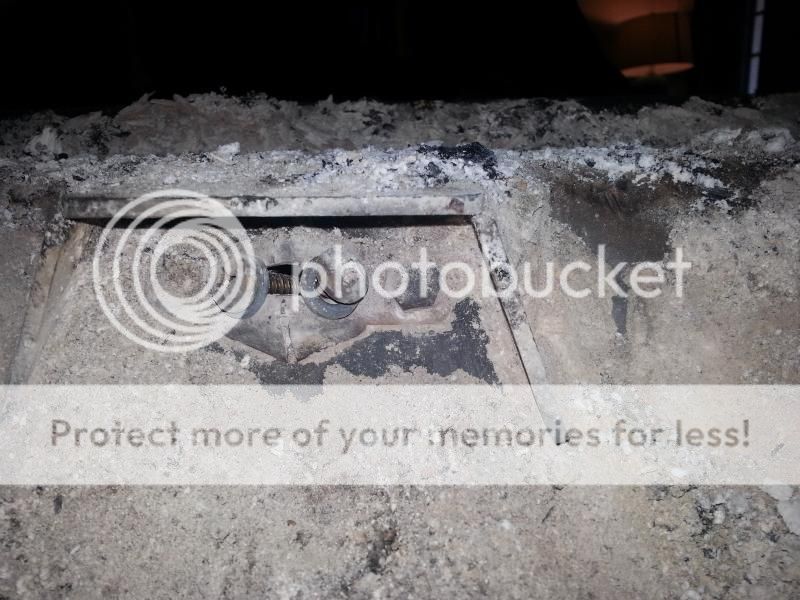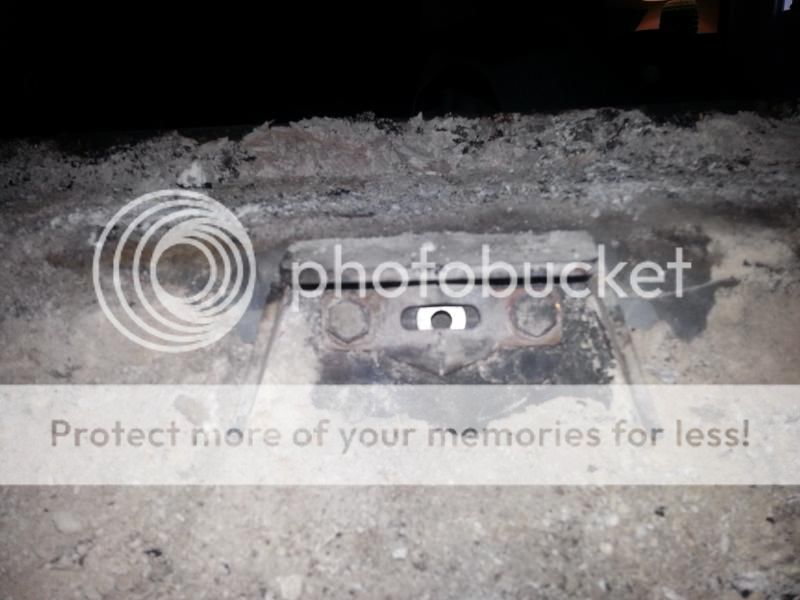Wolves1
Minister of Fire
I think you should be able to see the video. That is what think the perfect slow burn rate 45 min in. I filled it 8am at 6pm the cat temp was still 400 and blowing out heat.
My stove has never burned at a rate as slow as your video.
Clearly, I am not alone here.Hi everybody, I have been reading all the posts closely as I have purchased this stove a couple weeks ago and am not getting even close to a 12hr burn time! I have fully seasoned red oak that was cut last winter and split last spring. I am only able to get around 4 medium splits in with a decent bed of hot coals and that seems to last at most 6 hrs. Last night I loaded the stove and went to bed at 11:00 and came down at 8 this am and there were minimal coals and no fan on. It seems that I am getting too much air into to the unit with the damper closed down. I took off the first set of washers yesterday and that has worked a bit, I have not taken the knockouts out yet and I ordered the cat probe temp gauge last wk. Any suggestions so that I may hit 10-12 hrs would be greatly appreciated.
Hi everybody, I have been reading all the posts closely as I have purchased this stove a couple weeks ago and am not getting even close to a 12hr burn time! I have fully seasoned red oak that was cut last winter and split last spring. I am only able to get around 4 medium splits in with a decent bed of hot coals and that seems to last at most 6 hrs. Last night I loaded the stove and went to bed at 11:00 and came down at 8 this am and there were minimal coals and no fan on. It seems that I am getting too much air into to the unit with the damper closed down. I took off the first set of washers yesterday and that has worked a bit, I have not taken the knockouts out yet and I ordered the cat probe temp gauge last wk. Any suggestions so that I may hit 10-12 hrs would be greatly appreciated.
I open the primary because otherwise the coals smolder. The cat needs heat to be effective so I don't understand how a low temp or cool reading will allow this to happen.
I have been saying all along that I feel like the heat is going right out the chimney. There is no other logical place for it to go since it's certainly not going out into the house. Grisu you ask the question "I wonder what is happening in between" Well, I do to.
And I disagree with your comment on that it's up to me to get the insert to perform better. The insert is not working as described and while I have attempted to use the suggestions thus far, none have yielded the kind of results others have described.
The stove is in an existing fireplace. 25' chimney that is sealed at the top only. I did not install a block off plate above the stove as I was instructed by my dealer, as well as the rep from Regency that this was not needed. They both stated that the liner inside the masonry chimney acts as a thermos and that by installing the plate there is little to no effectiveness.
My old stove was a 30yo VC Encore Defiant. Same setup into an existing chimney with a liner. It was a dream. Fill it with wood, set the thermostat, enjoy hours of heat, repeat. It was $500 from Craigslist with maybe another $800 added in the 4 years I used it. This insert was close to $4000 with liner. Can you understand my frustration?
I'm looking at the stove right now. It's burning well since I took out an entire bucket of coals last night. With the cat and damper closed the flames are flowing forward and entering the cat which is glowing red hot. Temps are currently 750F.A cat stove "smolders" when the cat is not in the active zone which in your case starts above 600 F according to the manufacturer. In the active zone, it will "eat" all the smoke particles and convert them into heat. The air should be adjusted that the cat stays above 600 F.
I understand. The issue is that the temps fall off dramatically and the only way to achieve the 600F is to add more wood which is now contributing to the coal bed.
Woodstoves rely on proper operation by the operator. For a "set and forget" kind of appliance look at furnaces or pellet stoves. We are trying really hard here to help people get the most out of their units but that requires an open mind on part of the new member and the willingness to answer questions and try the suggestions we make. Right now, I mostly read complaints from your side. It sounds like you have made up your mind that the insert if crap. That's fine, talk to your dealer and see whether you can return it. Beyond that I am feeling that answering your posts here are a waste of my and the other members' time. Can you feel my frustration?
Hold on there. I did say I was willing to make this work and appreciate all the suggestions. Clearly Grisu, you have considerably more experience with this than I, and the whole reason I am on this forum is to make this work. I am frustrated by the amount of effort this has required to achieve what I would consider a modicum of the manufactures claims. I know that stoves are work. The payoff is a warm house without giving the money to the Saudi's. I did ask the question if I was expecting too much of the stove and used my previous stove as an example. And yes I did give the wrong model. It was a Defiant Encore with a cat.
So, I apologize if you feel that answering my posts and making suggestions is a waste of time. That was and is not my intention.
Most installers are reluctant to put a block-off plate in because it is more work. What happens is that warm air will rise up in your chimney, cool down at the brick walls, the cold air will fall down again, gets heated by your insert and so on. Especially with an exterior chimney you are running a giant heat exchanger that is heating your yard, not your house. Take a look at these two links:
https://www.hearth.com/talk/wiki/make-a-damper-sealing-block-off-plate/
https://www.hearth.com/talk/threads/finally-got-around-to-insulating-my-fireplace.75755/
Maybe you can retrofit it in or at least install them when you get a new insert/stove.
I installed my stove. I asked about the plate and was told it was not needed. I can always put one in. And before you question my install it was inspected by the dealer and rep and both commented on how well it was done. Even offered me a job doing it. I turned them down
Encore or Defiant? The Defiant is a 3+ cu ft stove. You essentially downsized your appliance and put it in a setting where you are losing more heat to the outside. Albeit old, those VC stoves were already very efficient. Even with "newer" tech there is not a lot more heat a modern stove can get out of given load of wood. It's like going from a 85% efficient oil furnace to a 95% efficient one. No one should expect to see a major reduction in their oil bill.
Coming back to the bypass: Take a look at the scheme on page 5: http://www.regency-fire.com/Files/Brochures/Regency-ProSeries-brochure.aspx
If that bypass is leaking, then a lot of smoke and hot air will go up the back of the firebox right into the flue without passing the cat first. That may well explain why you feel most of your heat goes up the chimney.
J RD - how did the screws work out for you? I havent had a chance to put them in yet


I got a question after 12 years of burning this is the first year actually have a moisture meter. I had my wood delivered in early May, the reading was 45% to 50% at time of delivery. I just took a reading on the outside it's about 13% I split the wood and on the inside it ranges from 22% to 27%. Is that acceptable?
What would be the perfect rang? Would it continue to season during the winter months?It's mediocre but you can probably make it work. Supplement it with some dry wood like lumber scraps or Bio-Bricks etc. Be vigilant about burning down the coals and keep an eye on your chimney. It may need a cleaning or two during the season.
i'm not sure if you were able to see the video I posted. What I thought was a slow burn if I would have wood in the 15 to 20% ( I'm assuming on the inside) it would burn longer and hotter?Perfect range is about 15% to 20%. Most woodstoves are adjusted to burn wood with ~17% moisture at optimum efficiency.
The wood will season a little bit over the winter but don't expect too much. From saturated down to 25% is the free water that is in the wood fibers. That dries relatively quickly. To get below 25% the wood bound within the cells needs to be removed which entails breaking down of the cell walls. That needs time and good drying conditions.
That burn was yesterday and it went for about 9 1/2hours, at the end no problems with coals about a shovel full and they still have a glow with a stove temp of 350. How much better do you think the stove would be if I have wood down under 20%?I saw the video and thought that looked pretty good. The question is for how long can you sustain the burn an do you have a problem with excessive coals?
Thank you for your input, I was completely unaware of seasoning red oak for 2+ yrs.I generally cut all my oak in january and split it all soon after until March. My wood seems to burn very well but I am curious to know if this may be the reason I'm not getting the extended burn times! Check out my slow burn video and tell me what you think. Thank you.
That burn was yesterday and it went for about 9 1/2hours, at the end no problems with coals about a shovel full and they still have a glow with a stove temp of 350. How much better do you think the stove would be if I have wood down under 20%?
Thank youNot sure how much better the insert would perform as the video looked pretty good. Maybe your moisture content is ideal for the air settings Regency engineered the stove for. That would be in line with the other reports here that the insert lets too much primary air into the firebox. Right now, I would suggest keep doing what you are doing and check your chimney regularly.

